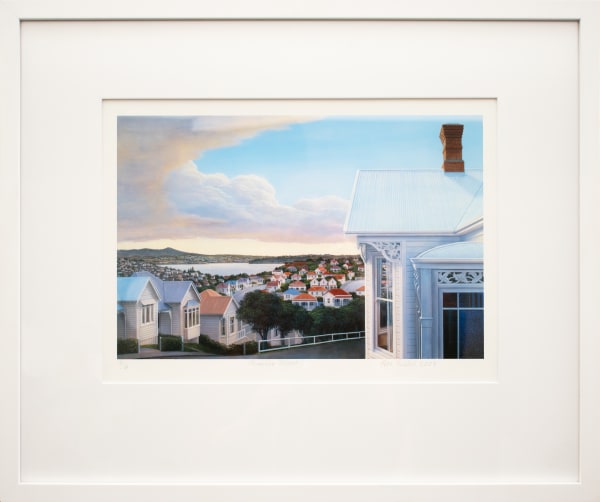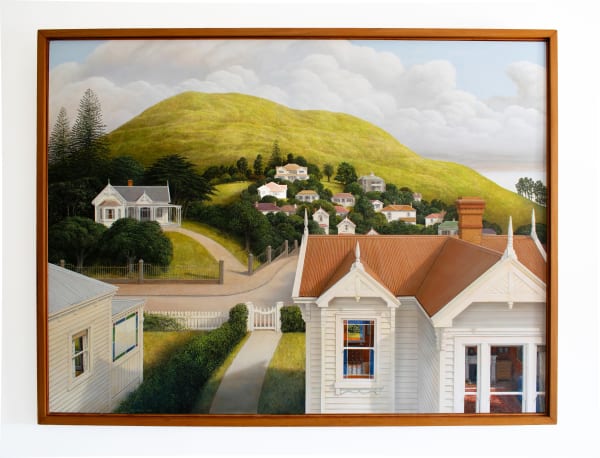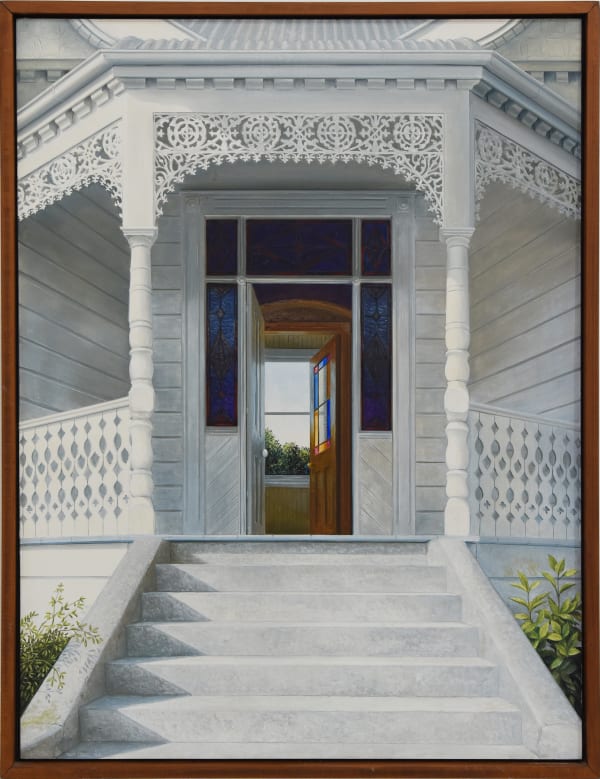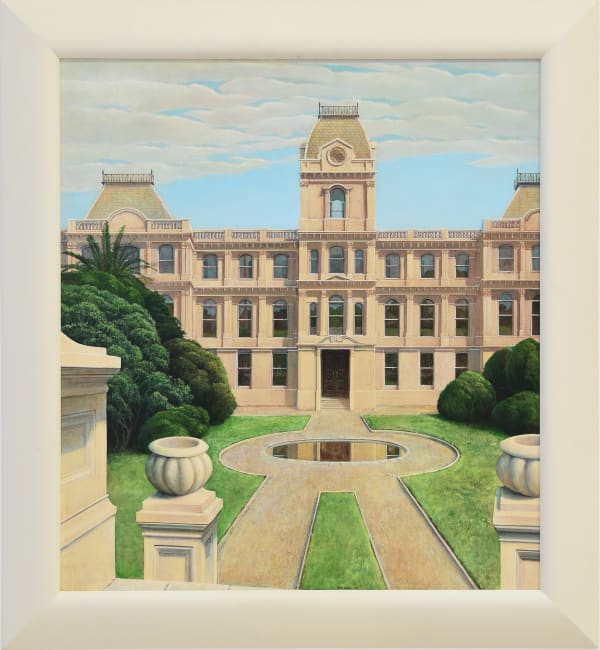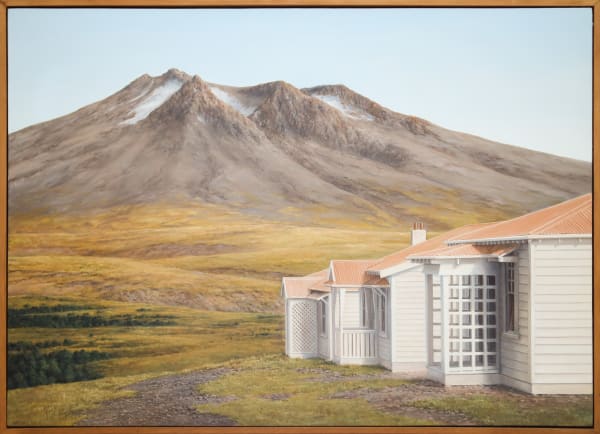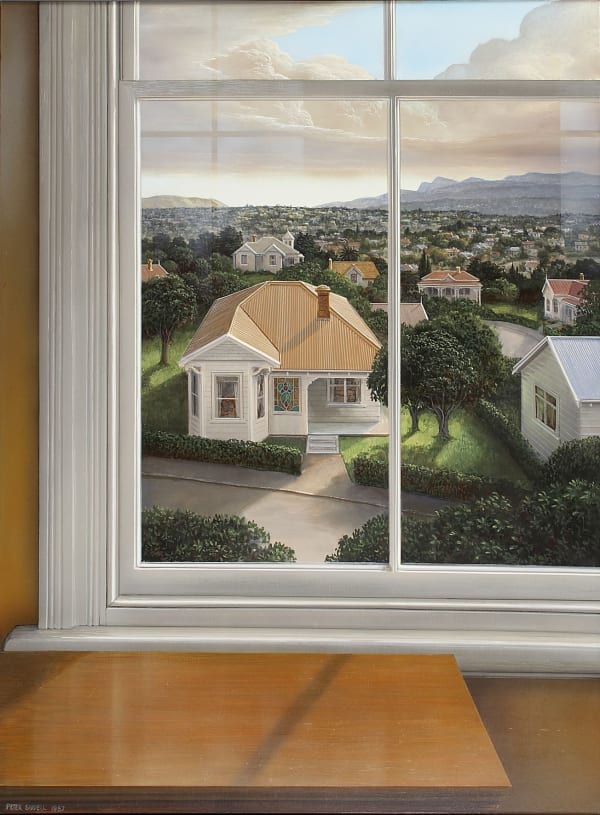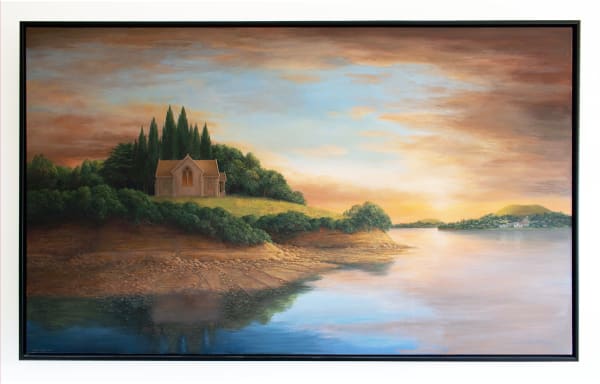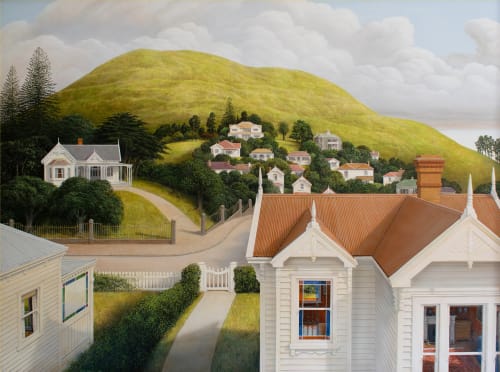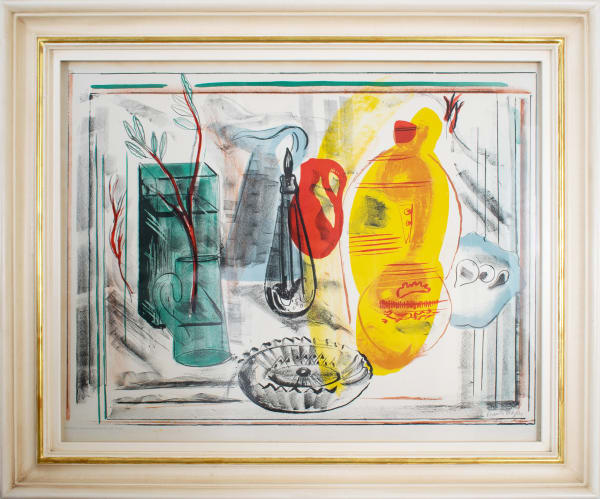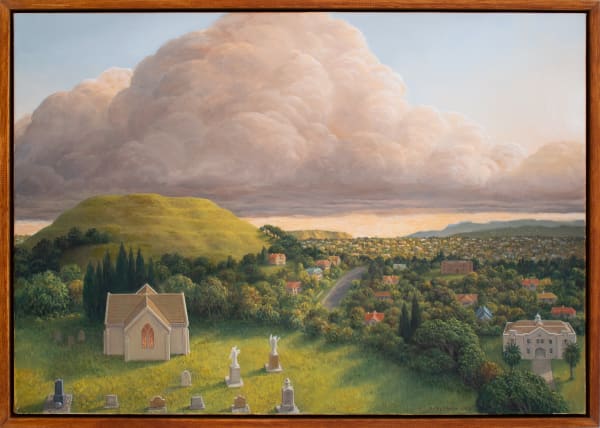Sir Peter Siddell New Zealand, 1935-2011
-
 Sir Peter SiddellScanlan Street, 2009Screenprint52 x 62 cmEdition 10/16Signed & dated 2009
Sir Peter SiddellScanlan Street, 2009Screenprint52 x 62 cmEdition 10/16Signed & dated 2009 -
 Sir Peter SiddellUntitled, 1983Oil on board90 x 120 cmSigned & dated 1983
Sir Peter SiddellUntitled, 1983Oil on board90 x 120 cmSigned & dated 1983 -
 Sir Peter Siddell82 Clonbern Road, Remuera, 1981Oil on board60.4 x 44 cmSigned & dated 1981
Sir Peter Siddell82 Clonbern Road, Remuera, 1981Oil on board60.4 x 44 cmSigned & dated 1981 -
 Sir Peter SiddellThe Customhouse, Auckland, 1975Acrylic on board78 x 71 cmSigned & dated 1975
Sir Peter SiddellThe Customhouse, Auckland, 1975Acrylic on board78 x 71 cmSigned & dated 1975 -
 Sir Peter SiddellPlateau, 1999Oil on canvas62 x 87 cmSigned & dated 1999
Sir Peter SiddellPlateau, 1999Oil on canvas62 x 87 cmSigned & dated 1999 -
 Sir Peter SiddellWestern Window, 1987Acrylic on board60 x 44.5 cmSigned & dated 1987 lower left
Sir Peter SiddellWestern Window, 1987Acrylic on board60 x 44.5 cmSigned & dated 1987 lower left -
 Sir Peter SiddellEvensong 2, 2009Oil on canvas90 x 159 cmSigned & dated 2009
Sir Peter SiddellEvensong 2, 2009Oil on canvas90 x 159 cmSigned & dated 2009
“The predominance of the urban image in his oeuvre sets Siddell apart from many of his contemporaries. The landscape has tended to dominate New Zealand painting and although the unique topography of this country is an essential component of his work, Siddell subordinates the landscape to the city. Or more correctly perhaps, he consistently juxtaposes the city with the land. Nature and human habitation co-exist.’
-

WINTER 2024
15 Jun - 7 Aug 2024Read more -

Landscapes
1 Apr - 21 May 2024Read more -

Sir Peter Siddell
12 - 26 Mar 2024As one of New Zealand’s most prominent realist painters, Sir Peter Siddell was perhaps best-known for his unpopulated cityscapes which appear familiar, yet are not identifiable. He drew together different...Read more

